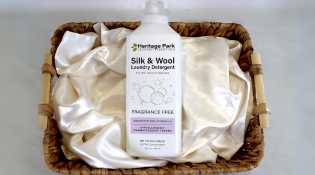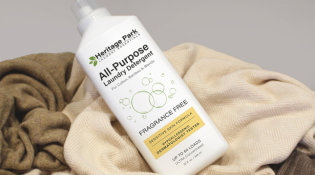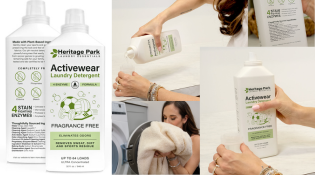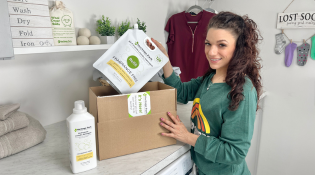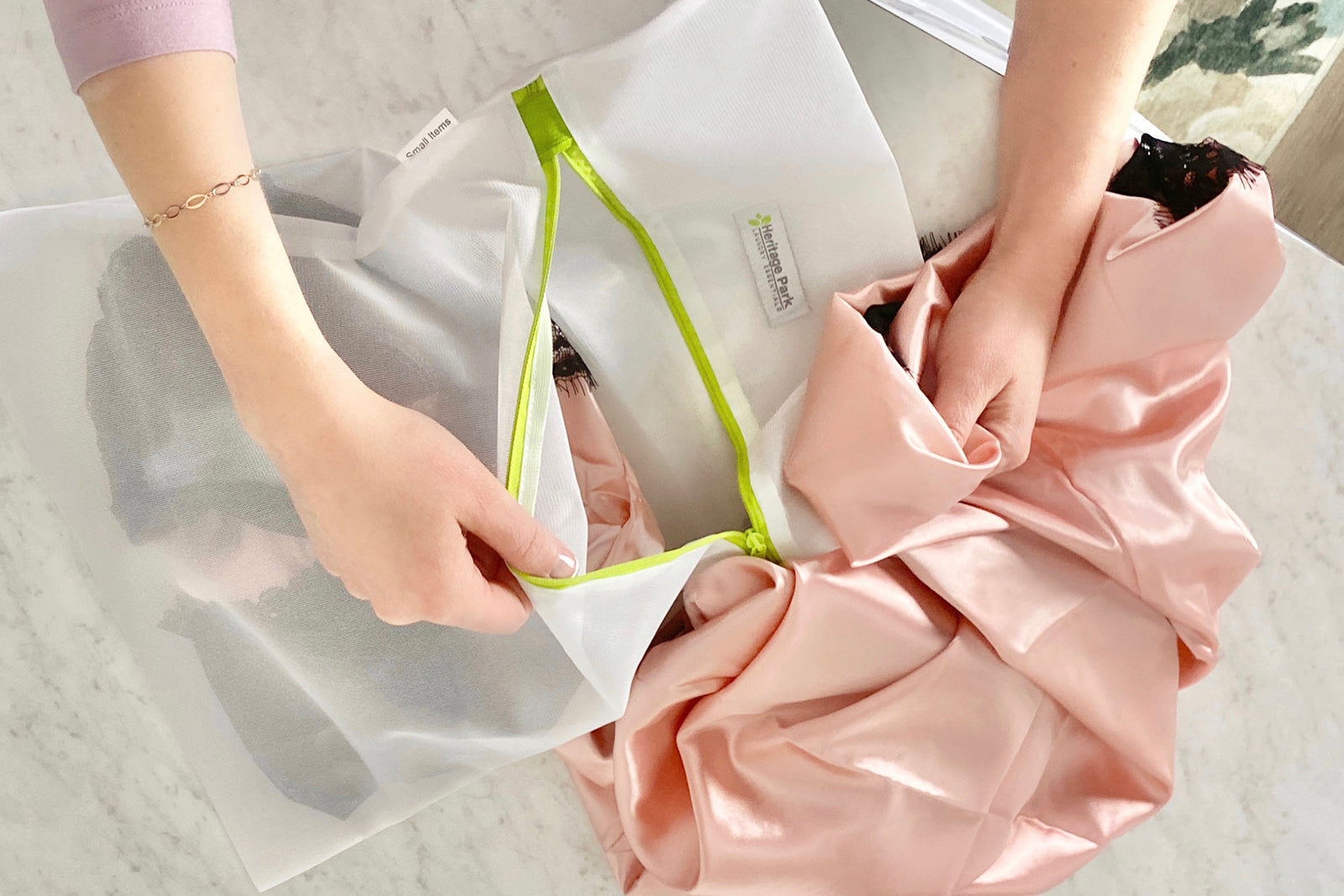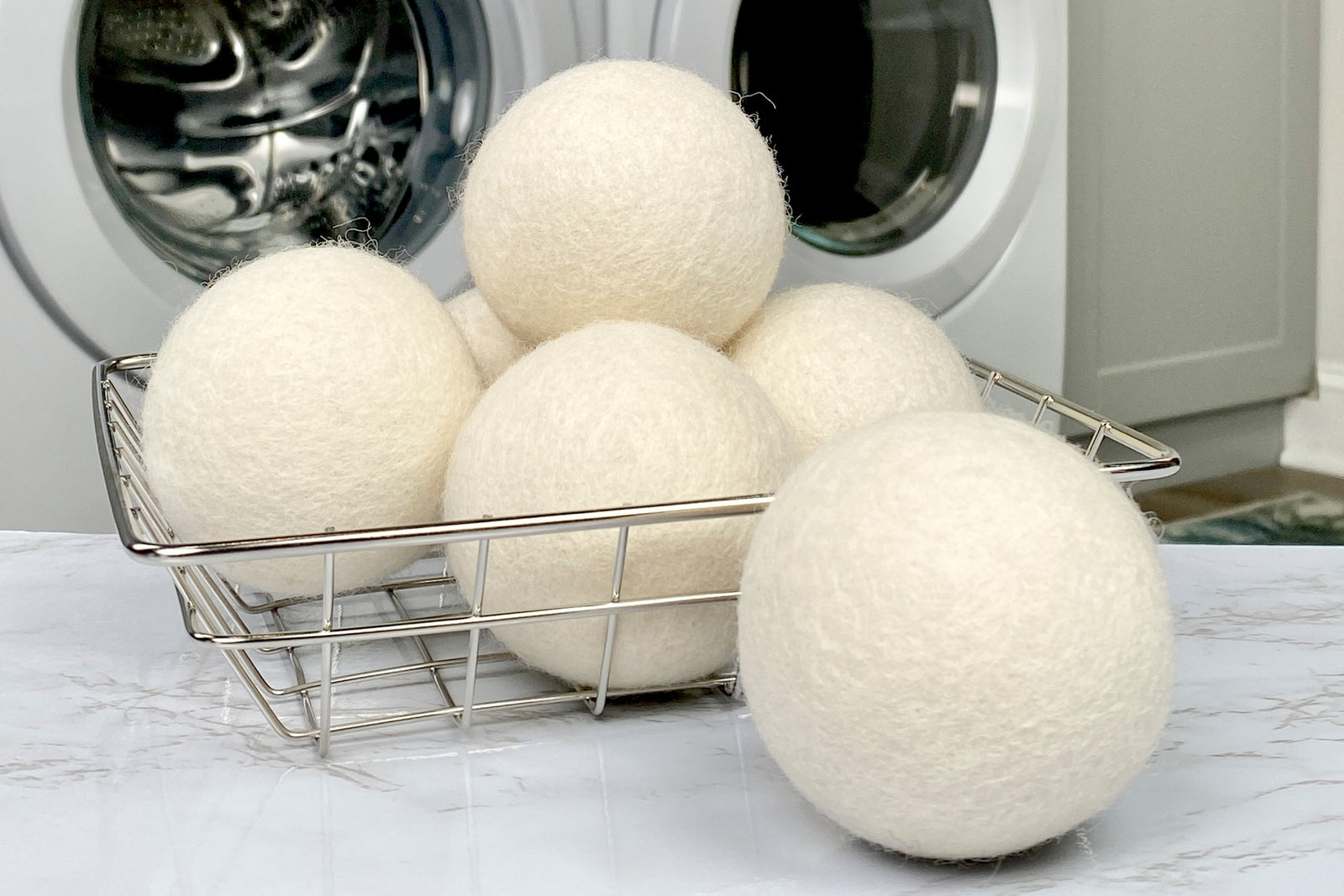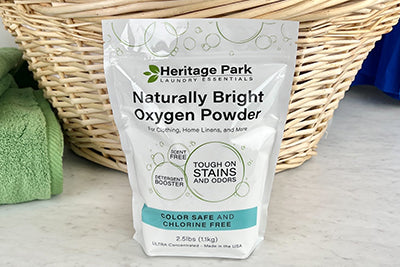If sensitivity is the cause of your family’s skin irritation, redness, or dermatitis, transitioning to a sensitive skin laundry routine is crucial for healing. But switching detergents alone isn't enough. You need a complete transition strategy to eliminate irritants and protect your skin barrier.
Key Takeaways
|
Understanding the Sensitive Skin Laundry Connection
Discovering you have sensitive skin, contact dermatitis, or atopic dermatitis often comes after months or years of unexplained skin irritation, itchy skin, and redness. Whether you're dealing with sudden skin sensitivity from a new skin condition, dry sensitive skin that's worsened over time, or reactive skin that's become increasingly problematic, transitioning your laundry routine is essential for skin health. After all, your clothing, sheets, and towels come in direct contact with your skin!
A Systematic Approach to Minimizing Irritation
The challenge isn't only about sourcing the right products for your allergy and skin concern. It is a systematic elimination of irritants into all the fabrics you launder. Sensitized skin reacts to trace amounts of harsh chemicals, irritants, and residue that wouldn't bother other skin types. This means your transition must be thorough to prevent allergic reactions and sensitive skin reactions.
The Key: A Sensitive Skin Laundry Routine
Many people make the mistake of simply switching detergents without addressing the complete sensitive skin laundry routine. They continue experiencing skin irritation, burning sensations, and dermatitis flare-ups because irritants remain in their environment, clothing, home linens, and laundry habits. A successful transition requires addressing every element that touches your skin.
Step 1: Detox Your Washing Machine for Sensitive Skin
Before introducing any new sensitive skin laundry detergents, it’s best to start with a clean slate and remove irritant residue from your washing machine. Years of conventional detergents (especially powders) and fabric softener can leave a buildup of fragrance and/or harsh chemicals that may trigger contact dermatitis or skin reactions. This is particularly true for front-loading machines, which can also smell musty and damp.
Deep Clean Your Washing Machine
For Top-Loading Machines
- Fill with hot water and add 2 cups white vinegar
- Let agitate for 2 minutes, then pause and soak for 30 minutes
- Complete the cycle, then run a second cycle with 1 cup baking soda
- Run a final rinse cycle with plain hot water
- Wipe down the drum, agitator, and dispensers with vinegar
For Front-Loading Machines
- Run a cleaning cycle with 2 cups white vinegar in the detergent dispenser
- Follow with a second cleaning cycle using 1 cup baking soda
- Clean the rubber gasket, dispensers, and filter thoroughly
- Leave the door open to air dry completely
This process removes soap scum, fabric softener and detergent buildup, and chemical residue that could trigger skin sensitivity and dermatitis. For atopic dermatitis sufferers, this step is particularly crucial as even trace irritants can cause flare-ups. Regular cleaning and maintenance of your washing machine—especially if it is a front-loader—will keep smells, odors, and build-up at bay.
Pro Tip: NEVER use fabric softener or dryer sheets. These products are not necessary; contain heavy fragrances and chemicals that trigger allergies; and leave a build-up on your laundry.
Step 2: Choose a Hypoallergenic, EWG-Verified Sensitive Skin Detergent
The most important decision in your sensitive skin laundry routine is selecting the best laundry detergent. Heritage Park All-Purpose Fragrance-Free Laundry Detergent represents the gold standard for sensitive skin protection because it combines natural ingredients with rigorous clinical testing. It is fragrance free, EWG Verified, and lab-tested hypoallergenic.
Why EWG VERIFIED® Matters for Sensitive Skin
EWG VERIFIED® certification ensures the detergent contains no ingredients of concern for human health, provides complete transparency about all components, and meets science-based safety criteria. For sensitive skin individuals dealing with contact dermatitis, atopic dermatitis, or skin sensitivity, this third-party verification eliminates guesswork about hidden irritants.
Hypoallergenic: The Safe Choice for Your Sensitive Skin
Independent testing and hypoallergenic verification are two more must-haves for your sensitive skin detergent. Heritage Park’s hypoallergenic formulas have been rigorously lab tested with 50 Human Subject RIPT testing and zero allergic reactions; they are also pediatrician and dermatologist tested. Instead of harsh chemicals, our pH neutral formulas clean with a five-enzyme formula that cleans without harsh chemicals or irritants. This clinical validation proves Heritage Park won't trigger sensitive skin reactions, skin irritation, or dermatitis flare-ups during your transition.
Step 3: Transition Your Existing Laundry
While laundry is pretty much our vocation and hobby here at Heritage Park, not everyone thinks of their laundry room as their happy place. That’s why we suggest rolling your sensitive skin laundry routine over time.
Rewash Priority Items First
Begin by re-washing items that come into direct contact with sensitive skin:
Week 1 Priority Wash
- All bedding (sheets, pillowcases, blankets)
- Underwear and sleepwear
- Towels and washcloths
- Baby and toddler clothes, sheets, and towels
Week 2-3 Wash
- Daily wear clothing
- Athletic wear and activewear
- Work clothes and uniforms
Double Rinse Everything
During the transition, use an extra rinse cycle for all laundry to ensure complete removal of old detergent residue and thorough rinsing of Heritage Park detergent. This prevents skin reactions from residual irritants and helps sensitive skin adjust to the new laundry routine.
Test Small Loads First
Begin with small loads to monitor your skin's response. Reactive skin may need time to adjust, and smaller loads allow you to identify any sensitivity issues before processing all your clothing.
Step 4: Eliminate Irritants from Your Routine
Ban Fabric Softeners and Dryer Sheets
As we noted above, fabric softeners and dryer sheets are no friend to sensitive skin (or to your laundry). These products. contain synthetic fragrances and chemicals that are major triggers for contact dermatitis and atopic dermatitis. These products leave waxy residue on fabrics that can cause skin irritation, itching, and burning sensations. Instead, seek natural alternatives like using natural wool dryer ballsto soften and speed up drying time.
Replace Harsh Chemical Skin Care Products
Your sensitive skin laundry routine should align with your overall skin care approach. Cosmetic products and skincare products with irritants can sensitize skin and make laundry irritants more problematic. Review skin care products for synthetic fragrances that increase skin sensitivity; harsh chemicals that compromise skin barrier function; and irritants that cause allergic contact dermatitis
Step 5: Optimize Washing Techniques for Sensitive Skin
Moving forward, implement these practices for sensitive skin:
Water Temperature and Cycle Selection
Cool to warm water (60-80°F) effectively cleans while protecting sensitive skin from heat damage that can worsen dermatitis and skin irritation. Hot water can strip natural oils and disrupt skin barrier function. Choose gentle, longer cycles over quick wash options. Extended washing with more water changes ensures thorough cleaning and complete removal of irritants that could trigger skin reactions.
Properly Measure Detergent
Using too much detergent can leave residue that irritates sensitive skin, while too little may not adequately remove irritants and allergens. Follow Heritage Park's concentration guidelines, adjusting for load size and soil level.
Manage Load Size
“Don’t overload your washing machine” is a common refrain here at Heritage Park. Sensitive skin requires thorough rinsing, and overpacked loads can trap detergent residue that triggers contact dermatitis and skin sensitivity.
Maintaining Your Sensitive Skin Laundry Routine
Now that you’ve implemented a laundry routine to protect sensitive skin, commit to these practices to maintain your results.
Choose Skin-friendly Fabrics. Natural fibers like cotton, bamboo, and linen generally work better for sensitive skin than synthetic materials. Silk can be particularly beneficial for facial skin and those with severe dermatitis. (The exception to this is performance/athletic wear, which is often synthetic and designed to wick away sweat).
Keep a Clean (Washing) Machine. Clean your washing machine monthly to prevent irritant buildup. Sensitive skin requires consistently clean equipment to avoid dermatitis triggers.
Stay Skin Savvy. Track your skin's response to identify patterns. Sudden skin sensitivity or sensitive skin reactions may indicate missed irritants or areas needing adjustment.
Make Seasonal Changes. Dry skin may require routine adjustments during winter months, while sun exposure and increased sweating may affect summer laundry needs.
If you’re ready to make the switch to a sensitive skin laundry routine, there’s no better time to begin than today! The Heritage Park team is here to answer questions and offer assistance about any of our products.
Frequently Asked Questions
How long does it take to transition to a sensitive skin laundry routine?
This will vary depending on your skin’s sensitivity and other treatments you may be using.
Should I wash my clothes twice when switching to sensitive skin detergent?
Yes, during the initial transition, wash priority items (bedding, underwear, sleepwear) twice to remove old detergent residue. We recommend double-rinsing for at least the first month to prevent skin reactions.
Why am I still itchy after switching detergents?
Sensitive skin reactions may persist if your washing machine hasn't been detoxed, fabric softener residue remains, or other irritants in your skincare routine are triggering sensitivity. Complete the full transition process systematically to identify the culprit.
Do I need to replace my towels for sensitive skin?
Use this simple process to revive and refresh your towels; this will likely allow you to get more life out of them.
How do I detox my washing machine for atopic dermatitis?
Deep clean with white vinegar and baking soda cycles, clean all dispensers and gaskets, and run several rinse cycles. Atopic dermatitis requires the most thorough irritant removal to prevent flare-ups.
Should I change my skincare routine when transitioning laundry products?
Yes, align your skin care products with your sensitive skin laundry routine. Harsh chemicals in cosmetic products can increase skin sensitivity and make laundry irritants more problematic.
Can sudden skin sensitivity be caused by laundry changes?
Sudden skin sensitivity can result from accumulated irritant exposure or new allergic reactions. A systematic sensitive skin laundry routine helps identify triggers and supports skin barrier healing.
What's the most important step in switching to sensitive skin laundry detergent?
Choosing a hypoallergenic, EWG-Verified detergent like Heritage Park is crucial. Thoroughly cleaning your machine is also essential, because leftover but detoxing your washing machine first is equally important. Irritant residue can trigger contact dermatitis even with gentle products.
How often should I clean my washing machine for sensitive skin?
Clean monthly to prevent irritant buildup. Sensitive skin and dermatitis sufferers need consistently clean equipment to avoid triggers that can cause allergic reactions and skin irritation.
Will my skin barrier improve with a better laundry routine?
That’s the goal! Eliminating irritants from your laundry allows skin barrier function to recover. Combined with appropriate skin care, a proper sensitive skin laundry routine supports healthy skin and reduces dermatitis symptoms.
Medical Disclaimer: The information provided in this article is for educational purposes only and is not intended as medical advice. Heritage Park Laundry Essentials is not providing medical advice, diagnosis, or treatment recommendations. We are not doctors or medical professionals. If you're experiencing persistent skin conditions, dermatitis, allergic reactions, or sensitive skin issues, please consult with your healthcare provider or dermatologist for proper medical evaluation and treatment. Always follow your healthcare provider's recommendations for managing your skin health.


